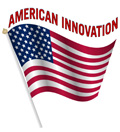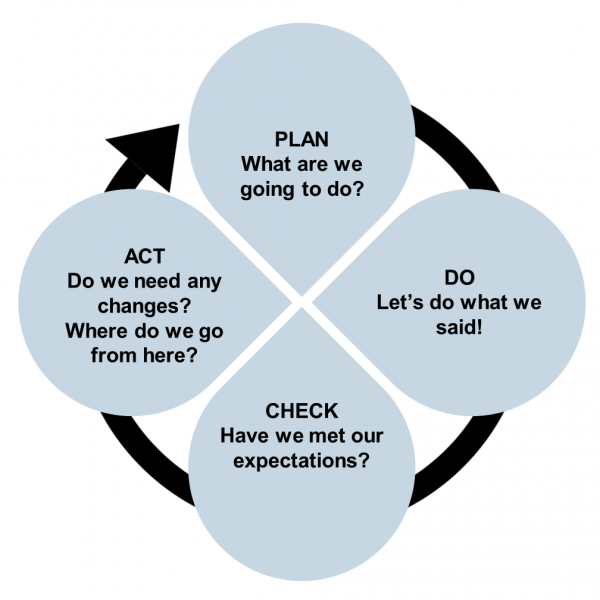The world is ever-changing, with constant new technological advances and an unending stream of new information creating a continuously shifting business landscape that can quickly become daunting if you’re trying to keep pace and not fall behind. Through this onslaught of new advancements, rules, and societal shifts, precise adaptation is paramount to continually reaching, and exceeding, company goals. Achieving a level of immediate, actionable adaptation to fall in line with the needs of the ever-advancing global business environment is a key purpose of the kaizen philosophy. For the uninitiated, kaizen, as it’s roughly translated, is the idea of “continuous improvement”, applied through making the regular, minute process and program improvements to make work easier, more sustainable, and to increase efficiency. Enacting change through continuous improvement, both through the implementation of smaller, persistent improvements with “daily kaizen”, and by tackling larger, more involved improvements with “kaizen events”, creates a litany of benefits that reworks a manufacturing process to realize its maximum potential.
Deeper Understanding of Processes
To truly make something better, it needs to be thoroughly understood, and one of the best ways to achieve understanding is through observation and mindful experimentation. One of the most common ways of achieving and actualizing this understanding with daily kaizen is through the PDCA method — Plan, Do, Check, Act. Organized as a continuous wheel, the PDCA method sets up the expectations for how a process should run, determines what the end result should predictably be, and measures how well the expected process actually functions. The pieces of the method are all fairly self-explanatory:
- Plan: Determine the desired results and objectives of a process or workflow.
- Do: Put the process into action, while collecting data on how well it is running, and experimenting with small changes along the way.
- Check: Dissect the data collected, determining how well it stacked up compared to the expected desired result and breaking down how well-implemented changes to the process improved the outcome, or whether those changes need further updates.
- Act: With the data from the “Check” phase, outline the opportunities for improvement and inefficiencies in the system. Address the root causes of these challenges in the next “Plan” phase to avoid redundancy and observe improvements in the next “Do” phase.
By breaking down and continually re-addressing the process methodology using a PDCA cycle, the process becomes intimately familiar, making it increasingly easier to improve upon over time, as well as providing invaluable data on how one process affects the outcome of other processes, providing insight into opportunities for even further improvement.
As these processes are improved, it becomes easier to improve faster and more mindfully, leading to smoother overall operations.
More Intent Employee Engagement
To truly affect meaningful change, an entire team needs to be involved, which is another central component of kaizen. In general, kaizen has an egalitarian approach to process improvement, believing that change does not only come from the top down. Rather, in kaizen, many of the daily kaizen improvements come from those who are actively working through the workflows and processes on a daily basis, as they are hands-on in the actual work, and they best understand how each step in the process leads to the end product. Through this understanding, it’s those same employees who are able to provide the greatest insight into what kind of changes would be best implemented to make the work easier, and thus, more efficient.
This understanding is taken to another level through “kaizen events”, wherein larger challenges are tackled in dedicated sessions with a group of employees from all portions of an organization. Teaming up employees from different departments creates an opportunity to explore solutions through previously unexplored lenses as a group, showcasing talents through problem-solving that some team members are unable to utilize in their day-to-day tasks, as well as giving other employees valuable insight into the ideas and thought processes of the people they work with.
Engaging employees in “kaizen events” provides employees with a clear platform to feel heard, and by using their ideas in process improvements, employees take a greater ownership over the work they are doing, as they are able to draw a more direct line between the end product and how their ideas and actions are able to make it better.
Stronger Client Relationships
A simple fact of business is that the fastest way to impress a client is by performing on-time and under budget. Both of these are possible without employing a kaizen methodology, but adopting kaizen shows a client something seemingly counter-intuitive, but that’s actually much more valuable: that your process is not perfect. A company willing to admit that there may be a better way to do tomorrow what it is actively doing today communicates a higher degree of pride in what they are doing than simply trying to attain an end product. This kind of commitment is readily apparent to clients and indicates that the client’s needs will be held to the same standard of continual improvement, providing them with the best possible product, translating to better business for them, creating a positive feedback loop for your client relationship.
Kaizen as a philosophy is relatively simple, but an exceptionally powerful business tool when employed correctly. Choosing to employ kaizen techniques as part of larger lean manufacturing methodology has allowed the Hansen Plastics Corporation to fulfill its commitments to its mission of providing the highest quality injection molded products and services to a diverse client base, ensuring customer satisfaction, trusting relationships, and sustainable, profitable growth. Adopting the ideas of continuous improvement and hosting regular kaizen events has empowered the employee-owners of Hansen Plastics to strive to create a more efficient, more sustainable company to provide the best possible service to their diverse customer base.
To learn more about Hansen Plastics Corporation, their techniques, and their business philosophy, visit Hansenplastics.com.



